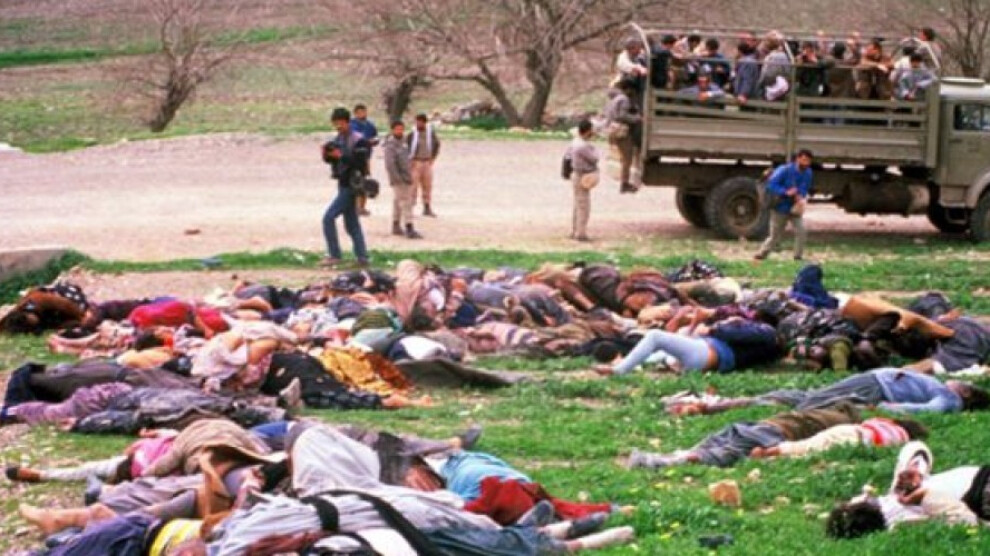16 March 1988: Remembering the Halabja massacre
Today marks 34 years since Saddam Hussein massacred thousands of his own people in a chemical attack on the city of Halabja.
Today marks 34 years since Saddam Hussein massacred thousands of his own people in a chemical attack on the city of Halabja.

The Baath regime in Iraq under Saddam Hussein left a black mark with a chemical gas attack on civilians in Halabja 34 years ago.
The attack caused over 5 thousand people to die, thousands were disabled and thousands others were forced to migrate.
The bombing was calculated to kill as many as possible. The first barrage shattered protective glass in windows throughout the city, making sure the gas reached its targets.
A cocktail of toxic chemicals was chosen for maximum impact. One gas had a strong, sweet aroma, like apple blossoms, said survivors, intended to make people inhale deeply to find out what was causing the smell. Another chemical was used as a paralyzing agent, causing people to collapse to the ground.
A third and lethal gas was used because it’s heavier than air. Anyone who fell, or crouched low for safety, or took shelter in a basement. They were dead within minutes.
Men, women, and children died indiscriminately as toxic gas seeped into their homes, through broken windows, filling the spaces where they’d taken shelter.
Up to 5,000 people perished that day. Thousands more were injured, most of them civilians.
An old man, a survivor of that day, Abdurrahman Reşit Emin, told ANF that he lost his mother and two siblings in the massacre which he describes as "moments of a grimness that would not end". Emin said that the air was covered with the smell of apples: "We were dumbfounded. The sky in Halabja was shaken with sounds of warplanes, of which there were around 10-15, as I might not remember the exact number. Everything happened so fast. Thousands of people drew their last breath in ten minutes. Dead bodies were lying everywhere one looked. The rest left the city and took the migratory route. Those left to poverty and sickness were as many as the dead. Everyone became miserable. Some lost their minds, some went blind."